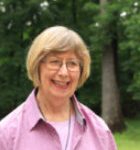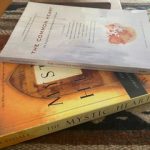 Exploring What We Have in Common: Engaging in Interspirituality
Exploring What We Have in Common: Engaging in Interspirituality
by Jenny Adamson
Member of the Contemplative Outreach Governing Board
Every year the Governing Board of Contemplative Outreach comes up with a list of intentions for actions to engage with throughout the year. Many are carried over for several years. The Governing Board wants to share with you an ongoing intention regarding interspiritual dialogue and we invite your participation. This intention reads: “Become aware of ways to participate in interspiritual dialogue, and seek out opportunities to sponsor or partner with interspiritual contemplative groups.”
We acknowledge that many of you are already involved in interspiritual dialogue and we invite you to share your experiences as an individual, as part of a chapter or other spiritual community, in a future e-bulletin. If you still have a copy of the October E-Bulletin, be sure to read or re-read Ron Barnett’s excellent article, Awakening Continues. While it is not about interspirituality it includes ideas about that dialogue.
The book Prayer and Temperament by Chester P. Michael and Marie C. Norrisey uses the personality types from the MBTI (Myers Briggs Type Indicator) and others to suggest, based on research, which types of prayer fit different temperaments best. For instance, it came as a surprise to me that an extrovert like myself would find meditation, specifically Centering Prayer, to be so natural and spiritually nurturing. That book confirms that meditation fits my personality type well.
If different types of prayer are more helpful than others in our relationship with the Divine, it also makes sense that different religions and different spiritual practices will fit some people better than others to enhance their relationship with the Ultimate Reality.
If we want to maintain a loving and respectful relationship with those with whom we engage in an interspiritual dialogue, we have first to set aside the common belief that our spiritual practice and our manifestation of God is the best or the only right one. It may be the best for us but not necessarily for others. I couldn’t have had a respectful interspiritual dialog as a child because my religion seemed to be the only right one. When I was confirmed the bishop told us that we should convert one person a year. My ten-year old self was doomed because I didn’t know any non-Catholics.
Our beloved Fr. Thomas Keating’s involvement in interreligious dialogue serves us today as a model for this intention.. For 20 years, from 1984 to 2004, at Father Thomas’ invitation a group of men and women from different spiritual traditions and practices met for about a week each year and became known as the Snowmass Conference. The participants went by Rabbi, Father, Swami, Grandfather, Imam, Sister, Roshi, Doctor, and Reverend. They represented many different religions: Islamic, Buddhist, Hindu, Native American, Jewish, Russian Orthodox, Roman Catholic and Protestant.
The group shared their contemplative practice of meditation, personal stories of their spiritual journeys and meaningful practices from their traditions. At the end of their time together the group wrote “The Points of Agreement” which had been the result of their ongoing discussions. Those were published in the book The Common Heart: An Experience of Interreligious Dialogue, edited by Netanel Miles-Yepez and published in 2006. Those points of agreement are:
- The world religions bear witness to the experience of Ultimate Reality to which they give various names.
- Ultimate Reality cannot be limited by any name or concept.
- Ultimate Reality is the ground of infinite potentiality and actualization.
- Faith is opening, accepting, and responding to Ultimate Reality. Faith in this sense precedes every belief system.
- The potential for human wholeness—or in other forms of reference, enlightenment, salvation, transcendence, transformation, blessedness—is present in every human being.
- Ultimate Reality may be experienced not only through religious practices, but also through nature, art, human relationships, and service to others.
- As long as the human condition is experienced as separate from Ultimate Reality, it is subject to ignorance and illusion, weakness and suffering.
- Disciplined practice is essential to the spiritual life, yet spiritual attainment is not the result of one’s own efforts, but the results of the experience of oneness with Ultimate Reality.
Fr. Thomas used the term “interreligious” since all of the members had some form of religious practice. We use the term “interspiritual” today to include those with a spiritual but not religious practice.
 For anyone wanting to explore more on this subject, The Common Heart is a great resource. The Mystic Heart, by Brother Wayne Teasdale is also worth exploring. Teasdale is considered to be the first one who defined the concept of interspirituality and he uses it in a number of ways. In one instance he describes” interspirituality” as the realization that although there are many spiritual paths, a universal commonality underlines them all. An early part of his book is called “Finding What Unites Us” which echoes the idea of “The Points of Agreement”. In another interesting chapter Teasdale describes some of the pioneers of interspiritual wisdom naming Fr. Thomas as one of them.
For anyone wanting to explore more on this subject, The Common Heart is a great resource. The Mystic Heart, by Brother Wayne Teasdale is also worth exploring. Teasdale is considered to be the first one who defined the concept of interspirituality and he uses it in a number of ways. In one instance he describes” interspirituality” as the realization that although there are many spiritual paths, a universal commonality underlines them all. An early part of his book is called “Finding What Unites Us” which echoes the idea of “The Points of Agreement”. In another interesting chapter Teasdale describes some of the pioneers of interspiritual wisdom naming Fr. Thomas as one of them.
In The Mystic Heart, Teasdale shares an experience of attending a talk by an Orthodox rabbi, Rabbi Gliberman, that formed his thinking in the interspiritual movement. In exploring other religions, the rabbi suggested that it is not “instead of” when embracing other traditions but “in addition to”. Teasdale came to believe that if we explore with an open heart, we don’t reject our own tradition but build on it.
A good friend of mine, a Christian, is an excellent example of “in addition to” in her interspiritual activity. She has been interested in Judaism. I went with her to listen to a rabbi talk about the Kabbalah, the mystical tradition of Judaism. She has been to Israel and has met with several rabbis locally. Currently, she is studying the practice of Musar, a Jewish ethical, educational and cultural movement.
I invite you to share your thoughts and experiences of the interspiritual activities in which you have participated. You could do that by writing something for an upcoming E-Bulletin by emailing isabelle@coutreach.org, If you would prefer share your story in an email or a phone call with myself or another Governing Board member, we would welcome your comments. You can contact us here.
After more than 20 years of practicing Centering Prayer, I have come to believe that the Ultimate Realty is manifested to each of us in the way that we can best understand. Based on 37 years of attending 12-Step meetings, I have had many opportunities to listen to others share their beliefs as I have shared mine. The 12-Step program can stand alone or provide a path to the Ultimate Reality. And for some it complements the practice of their religion.
Finally, my husband and I have belonged to an interspiritual meditation group for more than five years. Before the virus we met early, three mornings a week, five to fifteen of us, to share 45 minutes of silence. Now we do it virtually. There are others in the group like me who practice Centering Prayer. Some group members are Buddhists and some are spiritual but not religious. We come together in the Silence. Fr. Thomas reminded us frequently that God is in the silence.
His Holiness the Dalai Lama was a spiritual companion and friend to Fr. Thomas. Perhaps this quote from the Dalai Lama is one that he shared with him and that I share with you:
“I have been welcomed at places of worship throughout the world, and have visited and shared prayers at many sacred places of pilgrimage. But above all I have made friends with countless religious brothers and sisters … I have learned from these experiences that all the world’s religious traditions have similar potential to help us become better human beings … I believe that this wish to work for the happiness of others is the most important goal of all religious practices.”
Jenny Adamson
adamsonje6@gmail.com




